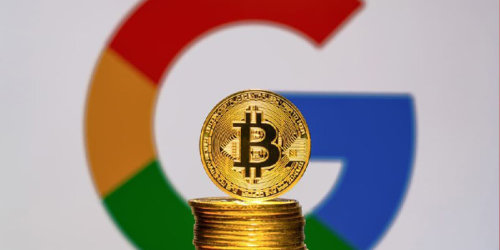As the digital payment landscape continues to evolve, Google Pay stands out as a leading player in the mobile payment ecosystem. This article provides an in-depth look at the features, benefits, integrations, and future prospects of Google Pay. We highlight new integrations and how they can impact your daily financial management.
With Google Pay eWallet, you can easily pay for everyday expenses and even fund your online gaming adventures with just a few taps on your mobile device or your laptop. So why wait? Keep reading to find out how you can enjoy never-seen-before convenience and ease of digital transactions.

Google Pay Features
Google Pay Send
This feature allows any smartphone owner to send and receive money from friends and family members directly within the Google Pay app. You can simply search for the contact they wish to send money to and complete the transaction without leaving the app. Google Pay Send also supports group payments, making it easy to split bills and share expenses like dinner with friends, traveling with your plus one, and so on.
Easy Set-Up and User-Friendly Interface
Google Pay offers a simple and intuitive set-up process, allowing you[TD1] to quickly link your bank account, debit and credit card, and other payment methods to the app. The user interface is designed for the convenience of use, making it easy to access various features and functionalities.
Contactless Payments
Google Pay enables you to make secure and convenient contactless payments using smartphones or other wearable devices. With a simple tap on a contactless payment terminal, you can complete transactions without the need for cash or physical cards.
Integration with Public Transit Systems
Google Pay has partnered with several public transit systems worldwide to enable contactless payments for transportation. You can simply tap your phone on the transit terminal to pay for your journey, eliminating the need for physical tickets or cards.
Google Pay's contactless payment integration with public transit systems is already available in numerous cities worldwide, including New York City, London and Sydney. Currently, this eWallet is compatible with various transit systems, such as the Metropolitan Transportation Authority (MTA) in New York, Transport for London (TfL) in London, and the Land Transport Authority (LTA) in Singapore. In Japan, users can add Suica, Pasmo, and ICOCA cards to their mobile digital wallet for fast and easy payments.
Advanced Security Features
Google Pay utilizes tokenization technology, which replaces sensitive payment information with unique tokens during transactions. This ensures financial data remains secure and reduces the risk of fraud. Additionally, Google Pay requires biometric authentication or passcode to authorize transactions, adding an extra layer of security.
Automatic Loyalty Program Enrollment
Google Pay makes it easy to join loyalty programs and earn rewards. When you pay with Google Pay at participating merchants, you are automatically enrolled in the merchant's loyalty program. This eliminates the need to carry multiple physical loyalty cards and streamlines the reward-earning process.
Google Pay Offers
This feature provides with personalized offers and discounts from their favorite retailers, restaurants, and service providers. You can find and redeem these deals directly within the Google Pay app, making it easy to save money on your everyday purchases.
Support for Cryptocurrencies
Google Pay is one of the digital wallets that integrated support for storage, management, and use of cryptocurrencies like Bitcoin and Ethereum. This feature enables virtually everyone to participate in the growing digital currency market without the need to create an extra account on some other specialized platform. However, other eWallets are also working to accommodate digital assets into their financial management services.

Tracking Your Financials
Google Pay offers a suite of financial management tools that help you track your spending, create budgets, and gain insights into your financial habits. The app automatically categorizes transactions and provides with visual representations of your spending patterns, empowering you to make informed financial decisions.
Bill Payments and Subscriptions
Google Pay simplifies the process of paying bills and managing subscriptions by allowing you to link your account with various service providers. With this feature, you can view and pay your subscriptions directly within the app and automate payments for convenience.
Google Pay Passes
Google Pay has partnered with various businesses and retailers to offer exclusive Google Pay Passes. These passes enable you to save and manage coupons, loyalty cards, gift cards, and event tickets within the app, providing a seamless and convenient way to access and enjoy rewards.
Google Pay for Online Gamers and Casinos Players
The popularity of mobile gaming has increased dramatically in recent years, and many online casinos have optimized their websites to work flawlessly on Android devices.
Compatibility with Android Devices
Google Pay is compatible with a wide range of Android devices, giving it a broad user base among players. In contrast, some competing digital wallets may have more limited device compatibility, making them less versatile, like Apple Pay, for example.
No Separate Account Required
Unlike some other eWallets, Google Pay does not require users to create and manage a separate account for their gaming purchases and casino transfers. Instead, Google Pay transactions are processed directly through the player's linked bank account or credit/debit card. This simplifies the process and reduces the need to maintain multiple accounts for different purposes.
Additionally, Google Pay has several unique features and advantages that set it apart from other similar eWallets like PayPal or Apple Pay. Here are some integrations that make the digital payment option stand out:
Deep Integration with the Google Ecosystem
Google Pay is seamlessly merged with other Google services, such as Maps, Assistant, and Google Shopping. This native app integration enhances the user experience by offering easy access to payment features within the whole system.
This interconnectivity offers easy access to payment features and the ability to streamline various tasks. Below are some examples of how Google Pay integrates with other proprietary applications:
Google Maps
Google Pay can be used to purchase various transportation services, such as ridesharing and public transit, directly within Google Maps. You can request a ride, select your payment method, and complete the transaction without leaving the Maps app.
Moreover, it also allows you to discover nearby businesses and services that accept Google Pay. This feature makes it easier to find locations where you can use this preferred payment method.
Google Assistant
Google Assistant integration enables you to conduct transactions and access Google Pay features using voice commands. You can ask a virtual Google Assistant to send money to a contact, check your account balance, or make a payment, all without having to open the payment app.
The voice assistant can also provide you with information about recent transactions, upcoming bills, or loyalty program rewards, making it easier to manage finances and stay on top of expenses.
Google Shopping
Google Pay is integrated with Google Shopping, allowing shoppers to make purchases within the platform using saved payment methods. This feature streamlines the online customer experience, as you don't have to tediously enter your payment information manually for each purchase.
The integration also enables you to save and manage loyalty cards, gift cards, and other reward-based payment methods within the Google Pay app. This simplifies the checkout process and ensures you can easily apply rewards and get discounts during the shopping experience.
Google Pay for Business
Google Pay for Business is a platform designed to help small and medium-sized businesses accept digital payments using QR codes. This service is integrated with the Google ecosystem, enabling business owners to manage their transactions, view analytics, and access customer insights within the Google Pay for Business dashboard.
Businesses using Google Pay can also benefit from Google Ads integration, allowing them to target potential customers more effectively and drive growth.
Google Pay Passes
Using the Google Wallet API enables businesses to reach millions of users by handling and promoting loyalty programs, gift cards, special offers, tickets, and boarding passes. Additionally, it allows businesses to send geolocation-based notifications, real-time updates, and messages to interact with customers wherever they are and whenever it is needed.
Google Workspace (formerly G Suite)
Google Pay can be used for payments within Google Workspace, enabling you to purchase additional storage, upgrade your plans, or pay for other services using your preferred payment method.
Integration with Google Workspace also allows businesses to manage their employees' access to Google Pay features, simplifying expense tracking and reimbursement processes.
This deep integration with the Google ecosystem makes the payment app a versatile and powerful tool. Check out the official Workspace page and see how your business can use these features to connect, collaborate and create more efficiently.
Google Pay India
Google Pay API for India operates on a unique India-only form of payment called Unified Payments Interface (UPI) (formerly known as Tez). It is a real-time payment system developed by the National Payments Corporation of India (NPCI). This collaboration enables Google Pay users in India to make instant transactions across more than 140 banks using a single app.
Tokenized Card Support in India
Google Pay in India has partnered with leading banks, such as HDFC Bank, Axis Bank, Kotak Mahindra Bank, and Standard Chartered Bank, to offer tokenized card support. This feature allows users to link their debit and credit cards to Google Pay, making transactions more secure and convenient. To learn more, visit the official Google Pay for India.
Challenges and Opportunities for Google Pay E-Wallet
Regulatory Compliance
As Google Pay expands its presence in new markets, it will need to navigate various regulatory landscapes and ensure compliance with local laws and regulations. This commitment to compliance will help maintain a secure and trustworthy payment environment for users while minimizing potential legal risks.
Competition from Other Digital Wallets
Google Pay faces competition from other digital wallet providers, such as Pay Pal, Apple Pay, Samsung Pay, and various regional players. To stay ahead in this competitive landscape, Google will need to continuously innovate and adapt to changing user needs and preferences.
Opportunities in Emerging Markets
Emerging markets present significant growth opportunities for Google Pay, as these regions often have large populations with limited access to traditional banking infrastructure. By offering a convenient and accessible digital wallet solution, Google Pay can tap into these markets and drive financial inclusion.
Collaborations with FinTech Companies
Google Pay has collaborated with several fintech companies to develop new features and services that cater to the evolving needs of its user base. For example, Google Pay has partnered with Plaid, a financial services company, to enable customers to connect their bank accounts to the app securely.

Final Thoughts
Google Pay continues to evolve and expand, solidifying its position as a leading digital wallet solution. With its latest innovations, enhancements, and global expansion, the platform is poised to have a significant impact on the future of finance, commerce, and technology.
By offering a secure, convenient, and user-friendly payment solution, Google Pay is expected to drive the widespread adoption of digital wallets and contribute to a more sustainable and financially inclusive future.
We reviewed other top eWallets, so you could choose the best one that suits your needs. Check out our Samsung Wallet, Apple Pay and Pay Pal reviews to get the best digital wallet today!
[TD1]Users/users word is way too repetitive. Mixing things up and changing perspective/focus to communicate directly to the reader


